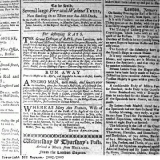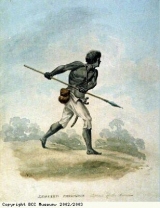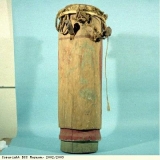Black resistance against slavery
Between 9 and 11 million enslaved Africans were bought by European traders from Africa between 1450 and 1870. They were taken across the Atlantic Ocean to work on the European-owned plantations and mines of the Americas. Hence the name the transatlantic slave trade. Although slavery had existed for hundreds of years in Africa prior to the transatlantic slave trade, nothing on this scale had ever been seen before. Slavery within Africa was on a much smaller scale and of a different character.
The transatlantic slave trade took people to the other side of the world. For enslaved Africans taken by the Europeans there was no hope of ever returning home. Men, women and children were expected to work for their entire lives with no freedom or rights. The slave owners did everything they could to make sure that the enslaved Africans forgot their languages, cultures and religious beliefs.
The enslaved Africans did all that they could to resist their enslavement. From the moment of capture and the journey across the Atlantic Ocean, to the plantations, enslaved Africans rebelled. Even in the knowledge that they would never get back to their countries or achieve freedom, they persisted in their resistance. Resistance took many forms. The enslaved Africans could purposefully damage machinery, work slowly or openly rebel against their masters and their slave status. They could also resist in subtler ways, for example, by keeping alive their African religious beliefs, names, language, music and stories. Pictured here is a drum from the Caribbean island of Haiti. The African slaves on Haiti fused their African religion with their owners’ Catholic religion, and created their own form of Christianity, called vodou. This meant that they managed to practise their own mix of beliefs from different African religions, whilst seeming to their owners to be practising Christianity, as instructed. Drums like this were made and used in the ceremonies of this new form of religion in Haiti.
Finally, the slaves resistance and rebellion paid off, when the transatlantic slave trade was ended (in 1807 for Britain). Eventually, the enslaved Africans were made free (in 1838 for those on British-owned plantations).





